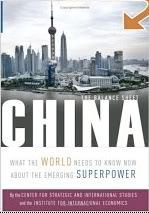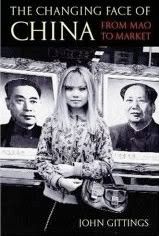Thinking About China
Martin Hart-Landsberg and Paul Burkett
Imports into the U.S. keep rising and the merchandise trade deficit keeps growing. Manufacturing jobs continue to disappear and wages and working conditions continue to worsen.
Increasingly, those who seek to explain these trends point to China. It is true that China has become an export powerhouse, and the United States its main market. China runs the largest trade surplus with the U.S. of all countries, and its exports are now threatening the jobs of both higher and lower paid workers. This export success has enabled China to accumulate a large reserve of dollars, which its leading enterprises are now trying to use to buy strategic assets, such as Unocal.
The AFL-CIO and many business groups and members of Congress are now in an uproar, demanding that the U.S. government take action against China to defend U.S. economic and national security interests. The progressive community seems torn. Many love China's new strength, seeing the country as an effective counterweight to U.S. global dominance. At the same time, they are sympathetic to the plight of U.S. workers and want to support the AFL-CIO.
This framing of current trends and tensions is, unfortunately, misleading and harmful to worker interests. It encourages workers to see China and its government, rather than domestic corporations and more structural factors, as the main cause of their problems. Not surprisingly, then, many in the U.S. labor movement believe that if only China had labor laws similar to U.S. laws or allowed its currency to move freely, then things would be O.K. This kind of thinking encourages a destructive nationalism and racism and masks the critical and harmful role of capitalist dynamics. Before this perspective gets entrenched, we need to challenge it and help people develop a different one, one that is truly useful for working people.
The first point to make is that China has indeed become a more important player in the world economy. But, while its growing influence can offer tactical advantages for countries resisting U.S. imperialism, such as Cuba or Venezuela, we should not fool ourselves into thinking that Chinese government interests are anti-capitalist. As we argue in our book China and Socialism, the Chinese economy is itself now shaped by capitalist market imperatives.
The second and more immediately relevant point is that U.S. worker problems are best explained by capitalist dynamics. The Chinese government is promoting a high-speed, export-led growth model that is powered by foreign direct investment. China has become the largest recipient of FDI in the world, and the Chinese government has actively courted that investment with tax benefits, infrastructure, and highly repressive and exploitative labor conditions. This investment has been largely diverted from other peripheral countries, especially in East Asia, that had previously depended on it to power their own export growth. China's success in attracting FDI and exporting manufactures thus poses a serious competitive threat to these other peripheral countries. It is tied, for example, to growing economic strains and instabilities in South Korea and Mexico.
Multinational corporations now account for a 34 percent share of Chinese industrial output, greater than the 30 percent share of state firms. They produce more than half of the country's exports, and the percentage keeps growing. China's growth is now largely dependent on the export activity of these firms. But, this export activity is not simply a Chinese phenomenon. The reality is that China has become the center of an East Asian regional production system, with firms located in other countries increasingly limited to supplying inputs and China serving as the location base for final production and sale to the main consumer markets of the world, in particular, the U.S. and Europe. Thus, while China's direct exports to the US have gone up, and the direct exports of other East Asian countries to the U.S. have gone down, the entire region has grown ever more knitted together and dependent on exporting, especially to the U.S.
While this regional economic restructuring has indeed produced a flood of China-based exports into the U.S. market, the consequences for Chinese workers have been remarkably similar to those of U.S. workers. Real as opposed to official urban unemployment rates are somewhere between 15 and 20 percent. Real wages for manufacturing workers have been stagnating if not declining. And, perhaps most surprising, given the charges of job stealing, as the U.S. based Conference Board points out, China has lost more manufacturing jobs than the U.S., 15 million or 15 percent of its total, between 1995-2002. Moreover, these losses were widespread, coming in 26 of the country's 38 major industrial sectors, including textiles.
China’s role in current capitalist dynamics is critical but not defining. Capital mobility has greatly increased throughout the world as multinationals seek to boost profits by creating regional production networks. Kate Bronfenbrenner and Stephanie Luce, in a study of production shifts, found that these firms are increasingly shifting production away from their home countries to multiple locations, near-shore and offshore. U.S. firms are primarily oriented towards Mexico and China. European firms are oriented towards Eastern Europe and China. And East Asian firms tend to look to China as both a near-shore and offshore location. This highlights both the fierce competition among transnational corporations based in the U.S., Europe, and East Asia, and the critical role played by China in the process.
In sum, what we face and must confront is not just a growing China-U.S. rivalry at the ruling-class level, but a transnational capitalist dynamic of uneven development that heightens trade and financial instabilities while bringing different countries' workers into an overarching framework of destructive competition both within and between different enterprises.***
Martin Hart-Landsberg is professor of economics at Lewis and Clark College, in Portland, Oregon, and author of "The Rush to Development: Economic Change and Political Struggle in South Korea and Korea: Division, Reunification, and U.S. Foreign Policy."
Paul Burkett is professor of economics at Indiana State University and the author of "Marx and Nature: A Red and Green Perspective." Hart-Landsberg and Burkett co-authored "China and Socialism: Market Reforms and Class Struggle" (Monthly Review Press, 2005).
Link




0 Comments:
Post a Comment
Subscribe to Post Comments [Atom]
<< Home